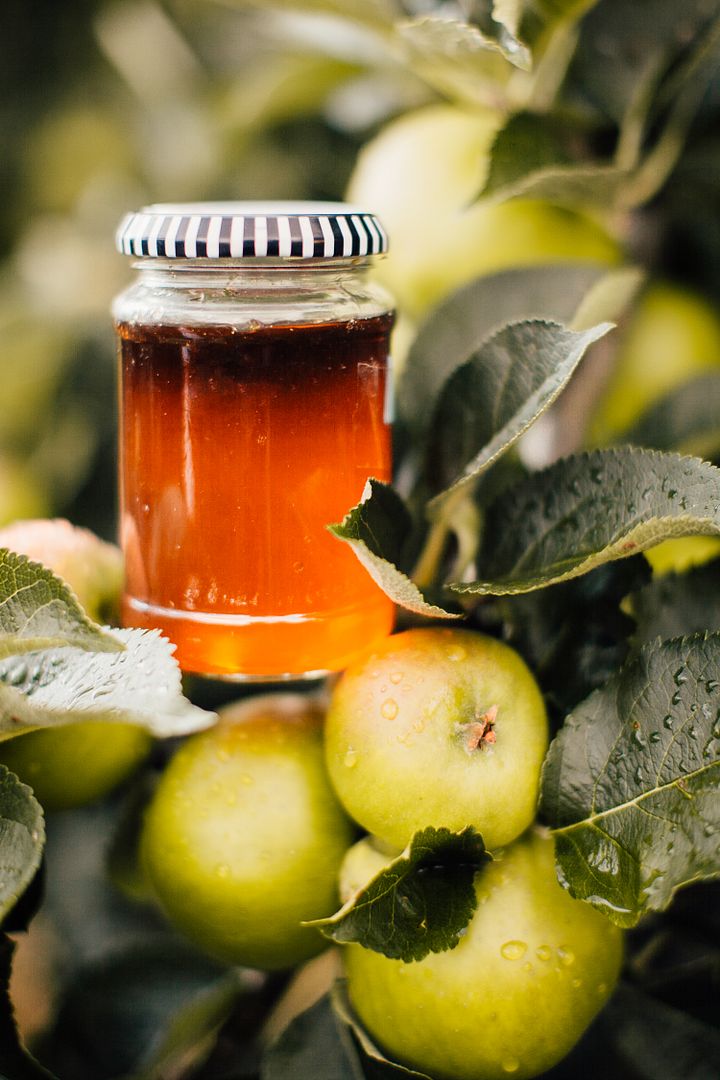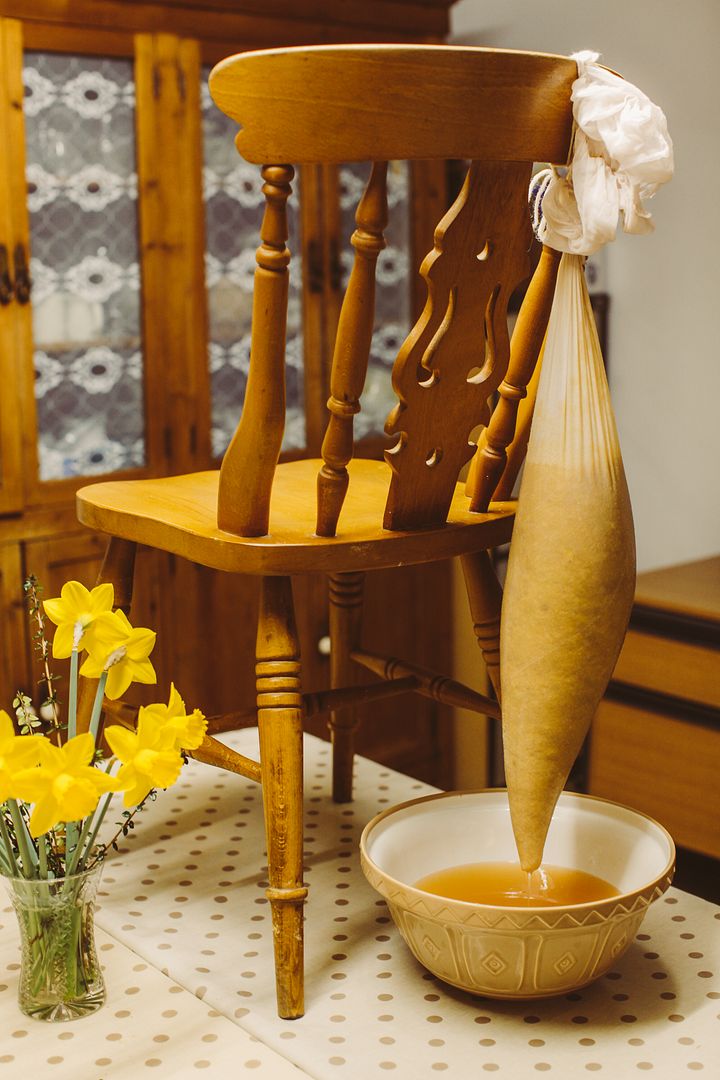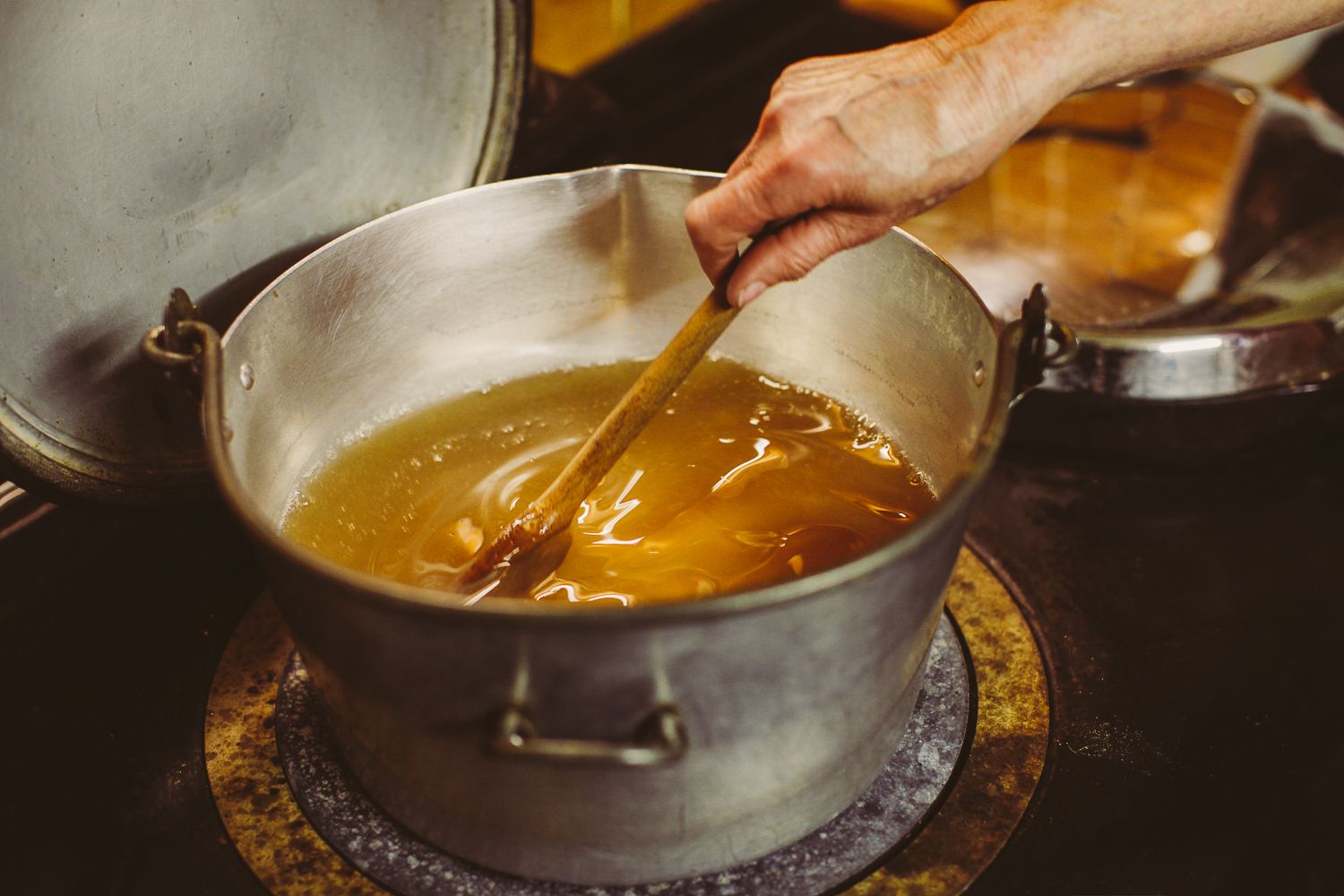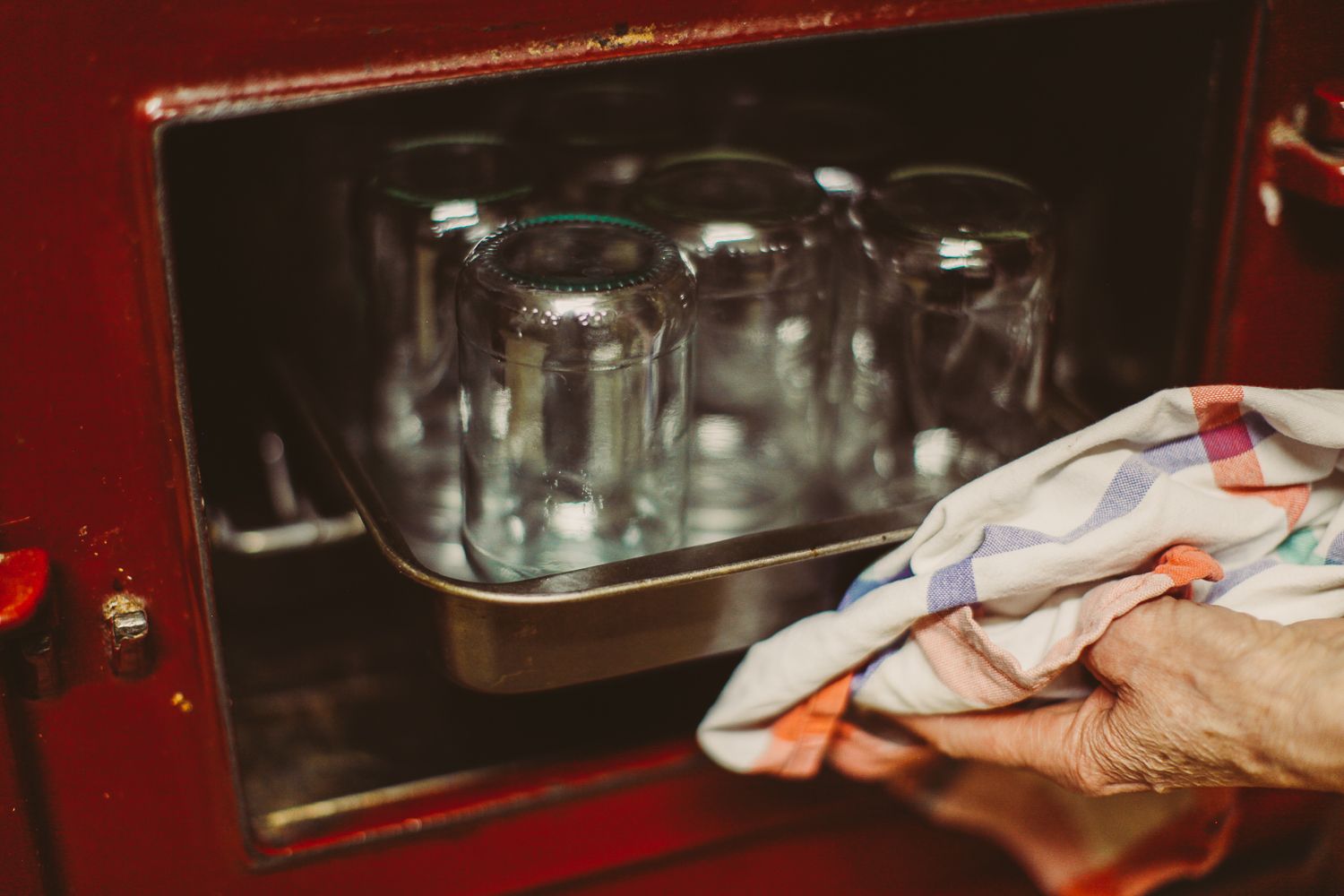
Thomas's mother is a wealth of knowledge and expertise; her wisdom is not limited to the kitchen and recipes, but it's an area she really excels in. Her delicious roasts and sweet apple tarts are a delight we get to enjoy on a near weekly basis. Even more impressive, she cooks and bakes everything on a traditional Aga. Agas are cast iron stove tops and ovens with a continuously burning source, making them constantly hot; instead of turning on your oven or stove top and waiting for it to heat up, you merely open the door or lift the lid and it's already hot. This also means instead of adjusting the temperature of your stove for various recipes, you focus on your cooking times and adjust recipes to work with the Aga's set temperatures. I've been meaning to feature a few of her recipes on the blog for awhile, but then even after we captured this recipe I took ages to edit the pictures! So, much after the fact, here is Anne Glass's classic clove and crab apple jelly recipe. 
 Wash the apples and cut them up without peeling or coring--just remove any bruised parts. Tie a small cheesecloth bag to the rim of the pot with 10-15 grams of cloves depending on how strong you want the flavor. Barely cover with water (about 2-3 cups) and bring to a boil, then reduce to a simmer.
Wash the apples and cut them up without peeling or coring--just remove any bruised parts. Tie a small cheesecloth bag to the rim of the pot with 10-15 grams of cloves depending on how strong you want the flavor. Barely cover with water (about 2-3 cups) and bring to a boil, then reduce to a simmer.

 Wash the apples and cut them up without peeling or coring--just remove any bruised parts. Tie a small cheesecloth bag to the rim of the pot with 10-15 grams of cloves depending on how strong you want the flavor. Barely cover with water (about 2-3 cups) and bring to a boil, then reduce to a simmer.
Wash the apples and cut them up without peeling or coring--just remove any bruised parts. Tie a small cheesecloth bag to the rim of the pot with 10-15 grams of cloves depending on how strong you want the flavor. Barely cover with water (about 2-3 cups) and bring to a boil, then reduce to a simmer.

 After the apples have simmered for about an hour or two they should be turning soft and pulpy, mash any last hard bits.
After the apples have simmered for about an hour or two they should be turning soft and pulpy, mash any last hard bits.
Place the apple mixture in a jelly bag and strain overnight into a bowl. Let the juice drip naturally; if you squeeze it the juice will become cloudy. (This is the step I saw on one of my first visits to Ireland and was fascinated with the sight of the jelly bag tied to the back of a chair, hanging out on top of the table!)


Return the strained juice to the pan and bring to a boil. Add the sugar; usually 1lb of sugar to every pint of juice. Crab apples have a lot of natural pectin so you don't need fancy jelly sugars or to add anything else; basic granulated sugar should do the trick. Stir to dissolve and boil briskly till setting point is reached. Test for a setting point by placing a drop of the jelly onto a cold plate; if it wrinkles when you push it with your finger, it is ready.

While everything is cooking down, maybe take a little harp break by the Aga...


Sterilize jars by washing them in hot soapy water, then rinsing well and putting them into an oven to dry completely for 20 minutes (if you're using a traditional oven and can adjust heat, then heat to 225F). Keep the jars warm in the oven until you are ready to fill them with the jelly.









CONVERSATION